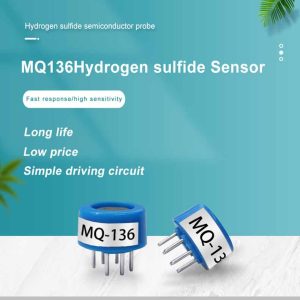Environmental monitoring plays a crucial role in assessing and managing the quality of our air, water, and soil. One key aspect of environmental monitoring is detecting and measuring various gases present in the environment. Gas sensor technology has significantly advanced in recent years, enabling accurate and real-time monitoring of gases in the environment. This article aims to explore the advancements in gas sensor technology for environmental monitoring, highlighting their benefits and potential applications.
Gas Sensor Technology:
Gas sensors are devices that detect and measure the concentration of specific gases in the surrounding environment. They work on the principle of gas adsorption, chemical reaction, or physical properties such as thermal conductivity or optical absorption. Traditional gas sensors were often bulky, expensive, and limited in terms of their range and sensitivity. However, advancements in nanotechnology, material science, and electronics have revolutionized gas sensor technology, making it more efficient, affordable, and versatile.
Miniaturization and Portability:
One significant advancement in gas sensor technology is miniaturization. Modern gas sensors are smaller in size, making them highly portable and suitable for field applications. Miniaturization has been achieved through the development of thin-film and nanomaterial-based gas sensors, which offer high sensitivity and selectivity in a compact form factor. These portable gas sensors can be easily integrated into wearable devices, drones, or IoT (Internet of Things) systems, enabling real-time monitoring of gases in hard-to-reach or hazardous environments.
Enhanced Sensitivity and Selectivity:
Another key advancement is the improved sensitivity and selectivity of gas sensors. Sensitivity refers to the ability of a gas sensor to detect even trace amounts of a specific gas, while selectivity refers to its ability to distinguish between different gases. Advanced gas sensor technologies, such as catalytic, electrochemical, and optical sensors, have achieved enhanced sensitivity and selectivity by utilizing specific materials, catalysts, and surface functionalization techniques. This enables the detection of gases at extremely low concentrations and minimizes the false alarm rate, ensuring more accurate environmental monitoring.
Real-time Monitoring and Data Analysis:
Advancements in gas sensor technology have also facilitated real-time monitoring and data analysis. Modern gas sensors are equipped with wireless communication capabilities, allowing seamless integration with data acquisition systems or cloud-based platforms. This enables continuous monitoring of gas concentrations, temperature, humidity, and other environmental parameters in real-time. Furthermore, advanced data analysis algorithms and software tools can process the collected data, providing insights into the pollution levels, emission sources, and trends. Such actionable information enables prompt decision-making for effective environmental management and mitigation strategies.
Applications of Gas Sensor Technology:
The advancements in gas sensor technology have opened up numerous applications in environmental monitoring. Here are a few notable examples:
Air Quality Monitoring:
Gas sensors are widely used for monitoring air quality, especially in urban areas where pollution levels can be high. They can detect gases such as carbon monoxide (CO), nitrogen dioxide (NO2), ozone (O3), and particulate matter (PM). Real-time monitoring of these pollutants helps in assessing air quality index, identifying pollution hotspots, and implementing appropriate measures to reduce emissions and protect public health.
Industrial Emission Monitoring:
Gas sensors play a crucial role in monitoring industrial emissions to ensure compliance with environmental regulations. They can detect harmful gases emitted by industries, such as sulfur dioxide (SO2), volatile organic compounds (VOCs), and ammonia (NH3). Continuous monitoring helps in identifying potential leakages, optimizing processes, and minimizing environmental impacts associated with industrial activities.
Indoor Air Quality Monitoring:
Gas sensors are equally important for monitoring indoor air quality in residential and commercial buildings. They can detect gases released from building materials, furniture, cleaning products, and cooking appliances. Monitoring indoor air quality helps in identifying potential health hazards, improving ventilation systems, and creating a healthier living or working environment.
Environmental Research:
Gas sensor technology is extensively used in environmental research to study the impact of human activities on ecosystems. It can help in assessing greenhouse gas emissions, monitoring soil gases, detecting volatile organic compounds released by plants, and studying the impact of pollutants on wildlife. This research provides valuable insights into environmental changes and supports th
 : +86 155 8830 2704
: +86 155 8830 2704 : jxdziot@gmail.com
: jxdziot@gmail.com
